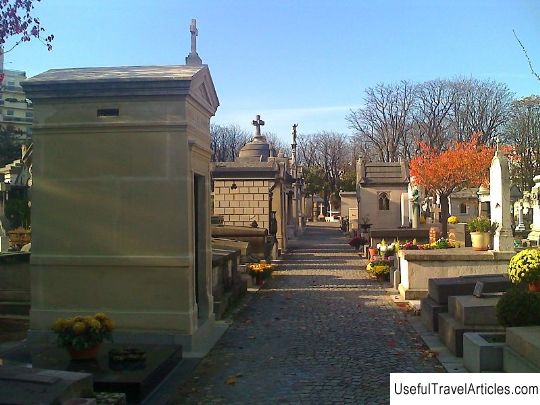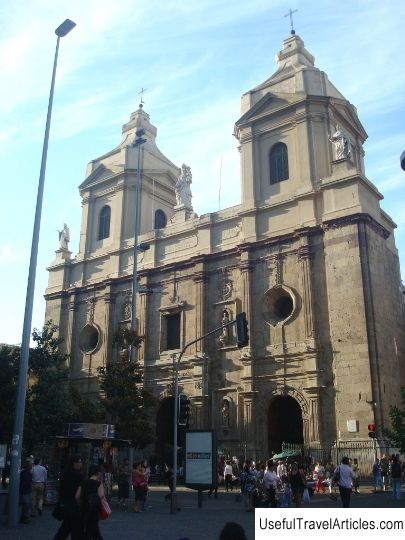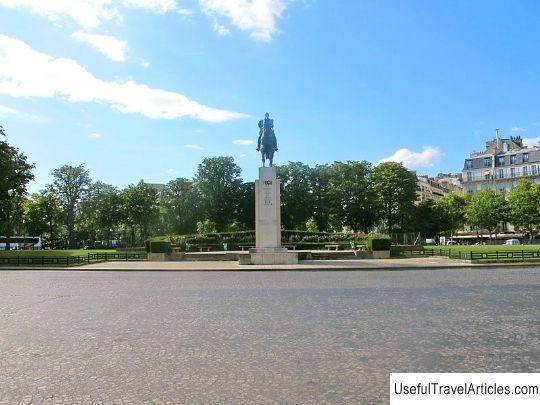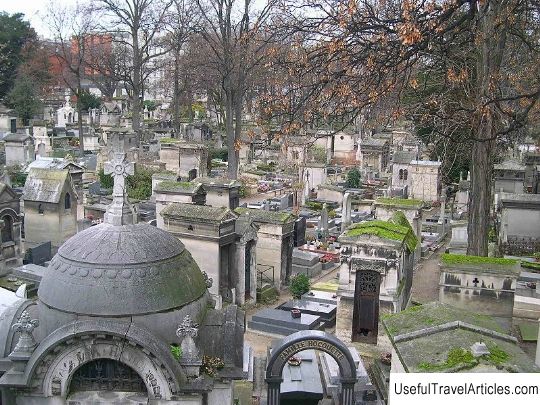Cemetery Passy (Cimetiere de Passy) description and photos - France: Paris
Rating: 7,6/10 (244 votes) 
Passy Cemetery (Cimetiere de Passy) description and photos - France: Paris. Detailed information about the attraction. Description, photographs and a map showing the nearest significant objects. The title in English is Cimetiere de Passy. Photo and descriptionThe Passy cemetery, opened in 1820, is located in a wealthy area on the right bank of the Seine, not far from the Champs Elysees. Naturally, it immediately became the burial place of the Parisian aristocracy. Here for the first time a heated hall for funeral ceremonies appeared - an unprecedented luxury for cemeteries of that time. Passy is a small (only about 2000 graves) and very interesting cemetery. Designed as a hanging garden, it is located above the level of the Trocadero, but behind the chestnuts and a high wall it is not visible. On the wall overlooking the Trocadero, there is an expressive bas-relief of military glory that appeared after the First World War. There are many tombstones in the cemetery by famous sculptors - Rodin, Zadkin, Landovski. The family crypts of famous families are decorated with magnificent colored stained glass windows. Many people who were once in glory rest here: French politicians Edgar Faure, Gabriel Anoto, Alexander Millerand (12th President of France), the last emperor of Vietnam Bao Dai, artists Edouard Manet, Berthe Morisot, composers Claude Debussy, Jacques Ibert, founder of the automobile company Marcel Renault, pioneer of aviation Henri Farman, actor Fernandel ... The compositional center of the cemetery is the majestic tomb of Maria Bashkirtseva (1858-1884). The artist, who died of tuberculosis at the age of 25, kept a diary all her life, after her death, published and translated into many languages. Bashkirtseva was the first Slavic artist whose work was acquired by the Louvre, but she is known mainly from her diary. Tsvetaeva and Bryusov admired Bashkirtseva, Rozanov, on the other hand, contrasted her with strikingly frank entries to the Diary of a Russian Woman by Elizaveta Dyakonova. Dyakonova herself wrote about Bashkirtseva's diary: “Poor 19th century! It was reflected in a proud, weak and immoral person. " However, later it turned out that the original was not published - almost all the records were censored by the girl's family. 84 notebooks of Maria Bashkirtseva are kept in the National Library of France.        We also recommend reading History Museum (Muzeu Historik) description and photos - Albania: Vlora Topic: Cemetery Passy (Cimetiere de Passy) description and photos - France: Paris. |




